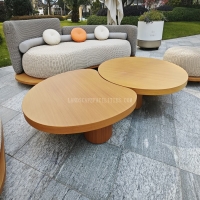Welcome to the website for landscape facilities products and knowledge.
How does the table’s design address potential issues with material degradation from UV exposure?
Contemporary outdoor table designs employ multiple sophisticated strategies to prevent material degradation from UV exposure. Manufacturers integrate UV-resistant polymers and composite materials that inherently withstand solar radiation without deteriorating. Many premium tables feature advanced protective coatings containing UV inhibitors that create a barrier against harmful rays, similar to high-SPF sunscreen for furniture. The molecular structure of these coatings absorbs and disperses UV radiation before it can penetrate the core material.
Some designs incorporate material-layering techniques where a UV-stable outer layer shields more vulnerable underlying materials. Aluminum tables often use powder coatings with built-in UV stabilizers, while wooden tables utilize deeply penetrating sealants that block UV rays at the surface level. Engineering approaches include designing tables with minimized direct sun exposure surfaces through strategic shading elements integrated into the table structure itself.
Innovative material treatments include embedded ceramic particles that reflect UV radiation and specialized pigments that resist color fading. The most effective designs combine multiple approaches: UV-absorbing additives within the material matrix, protective surface barriers, and physical design elements that reduce overall UV exposure. These comprehensive protection systems ensure tables maintain structural integrity and aesthetic appeal despite continuous outdoor exposure, effectively addressing material degradation concerns through both chemical and physical defense mechanisms.
Related search:

Recommendation
Elliptical metal outdoor table with nested design, resembling wood grain, round table